Oceans, seas, lakes, rivers — the bodies of water in this world are all unique, biodiverse, and absolutely amazing. The things that live in these bodies of water are equally as amazing. When it comes to the Red Sea, this body of water is interesting to study. The Red Sea has a fascinating history, it serves a purpose economically, it’s extremely salty, and you can find the most majestic creatures living in its depths.
Let’s explore 10 mind-blowing facts about the Red Sea. We’ll go over each point in more detail and provide you with fun facts about the sea that will leave you in awe.
One of the Saltiest Seas
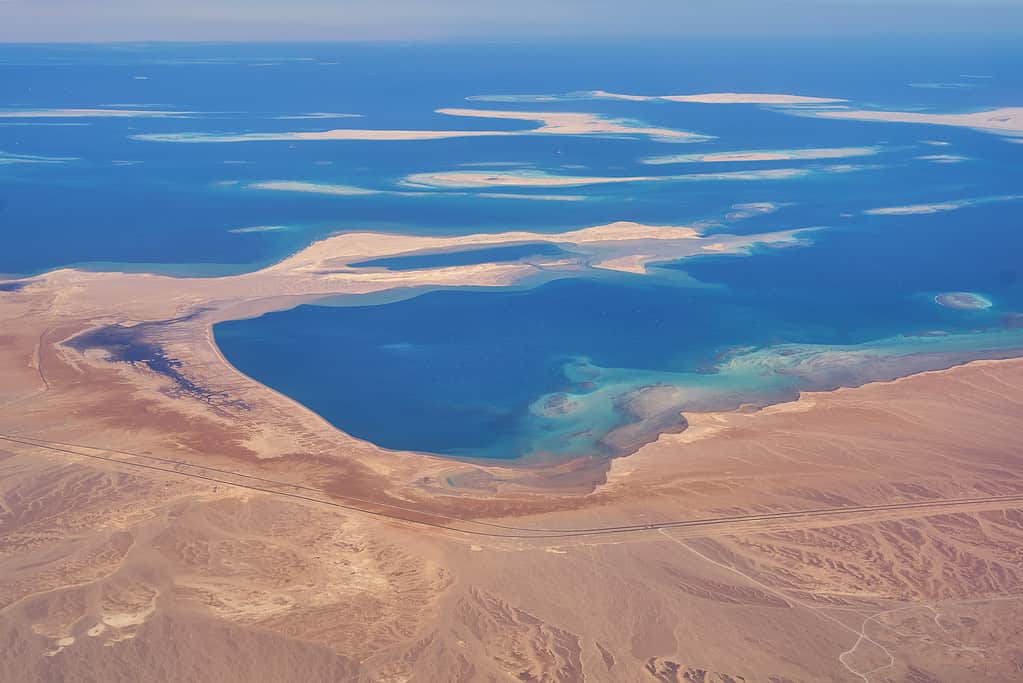
The Red Sea is one of the most shallow seas in the world, with 40% of it being less than 330 feet deep.
©Berezko/iStock via Getty Images
The Red Sea should be called The Salty Sea. Why? Because the Red Sea is extremely salty. Its very high salt concentration makes it the saltiest body of water in the world. Usually, the salinity of other bodies of water is about 35%, whereas the Red Sea’s salinity is about 40%. There are a few reasons why the Red Sea is extremely saline. The geographical location of the Red Sea has something to do with it. But also the Red Sea has a high evaporation rate, no significant rivers flow into the Red Sea, and it hardly rains in the region. Because the area around the sea is so dry, there is no other place for the sea’s water to go, and there is no fresh water that goes into the sea.
Abundance of Biodiversity

The Red Sea is home to the fastest fish in the world. The solitary sailfish can swim a whopping 68 miles per hour.
©Konoplytska/iStock via Getty Images
The Red Sea is extremely biodiverse, which is interesting because of its extreme salinity. But animals have a way of adapting to their surroundings. There are so many majestic creatures that live in the depths of the Red Sea. There are over 1,200 species of fish, 250 species of coral, and 44 species of sharks. Many of the species of animals that live in the Red Sea are also endemic to the region. In fact, 17% of the fish species come from the sea, as well as 8% of the species of coral. Some of the marine animals that you can find while you scuba dive in the Red Sea include lionfish, common dolphin fish, Red Sea clownfish, and puffers.
Beautiful Coral Reefs
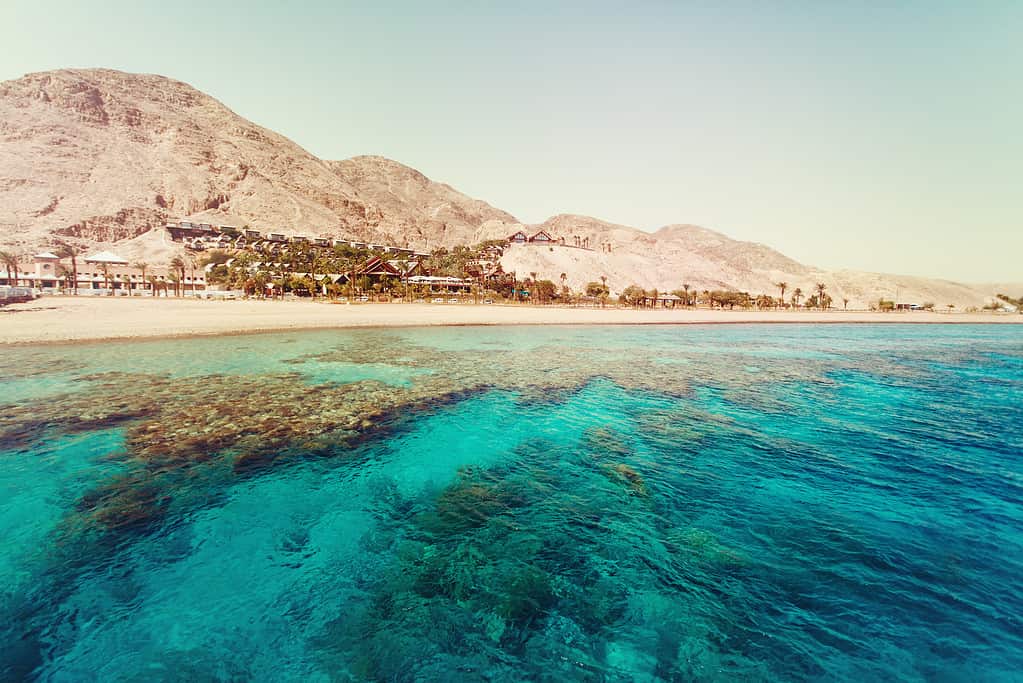
The Red Sea is the northernmost tropical sea in the world, which is one of the reasons why it’s home to an abundance of marine life and corals.
©DariaZu/iStock via Getty Images
There are very few places in the world where coral reefs abound. The most famous coral reef is located in Australia and the second most famous coral reef is located in Central America. But even though the Red Sea is so saline, there are coral reefs that thrive here. The Red Sea is a tropical sea, which means that there are close to 1,240 miles of coastline where you can find colorful coral reefs. The 250 species of coral reefs that make the Red Sea their home are over 7,000 years old. Some of the most common corals you will find in the depths of the sea include the Acropora, the Gorgonia, and the Whip Coral. Part of the coral reef coastline is protected by the Egyptian government and is part of the Ras Mohammed National Park.
Many, Many Islands

The Dahlak archipelago is famous for pearl mining, something that has been done for centuries.
©Konoplytska/iStock via Getty Images
One fascinating thing about the Red Sea is that it has a whopping 521 islands. Of course, the countries that border the Red Sea control some of those islands. For example, Egypt owns 39 of those islands including Abu Minqar, Qaysum, Umm al-Kayan, and Sahl Hasheesh. Saudi Arabia owns several islands including Tiran and Sanafir. What is the most amazing thing about these islands is that some of them are only a few years old. This is because there’s volcanic activity in the Red Sea that creates some of these land formations. Near Yemen, two islands are part of the Zubair archipelago — Sholan, which formed in 2001, and Jadid, which formed in 2013. Many of these islands are popular tourist attractions — mainly for diving purposes.
Mysterious Name

There is a mountain range called Harei Edom that has a reddish color, which could have prompted people to name the sea because of those mountains.
©Yaroslava Onuferko/iStock via Getty Images
The sea is called Eritra Thalasa in Greek, and in Arabic, it’s called El-Bahr El-Ahmar. In English, it’s called the Red Sea. But why? No one truly knows the answer, but there are four theories. The first theory is that there are algae that bloom from time to time called Trichodesmium erythraeum, and that is why the water can appear to be a reddish-brown color.
The second theory is that the ancient Greeks called it Eritra Thalasa and the word erithros means red in Greek. The third theory is that back in ancient times, people would name the seas based on different locations. Black meant north and red meant south, which is why the Red Sea was named as such.
Lastly, the mountains near the Red Sea were reddish because they contained iron oxide. That could have been a reason why people living nearby called it the Red Sea.
Vivid History

The Red Sea has a colorful history that started even before it was mentioned in the Bible.
©rudall30/iStock via Getty Images
Many of the seas throughout the world have fascinating histories. The Red Sea is no different. The Red Sea has played an important role in many of the ancient civilizations that have ruled the areas surrounding the Mediterranean Sea. The Egyptians, the Greeks, the Arabs, and the Romans have all used the Red Sea for exploration and trade. But that’s not all. The Red Sea, which has been referred to by others as the “Underwater Garden of Eden,” played an interesting role in the Bible. The passage in the Bible where Moses parts the sea to help the Israelites escape to freedom took place in the Red Sea. Archeologists and historians have surmised that the place where Moses parted the sea was in the Gulf of Aqaba.
Shipwrecks Galore
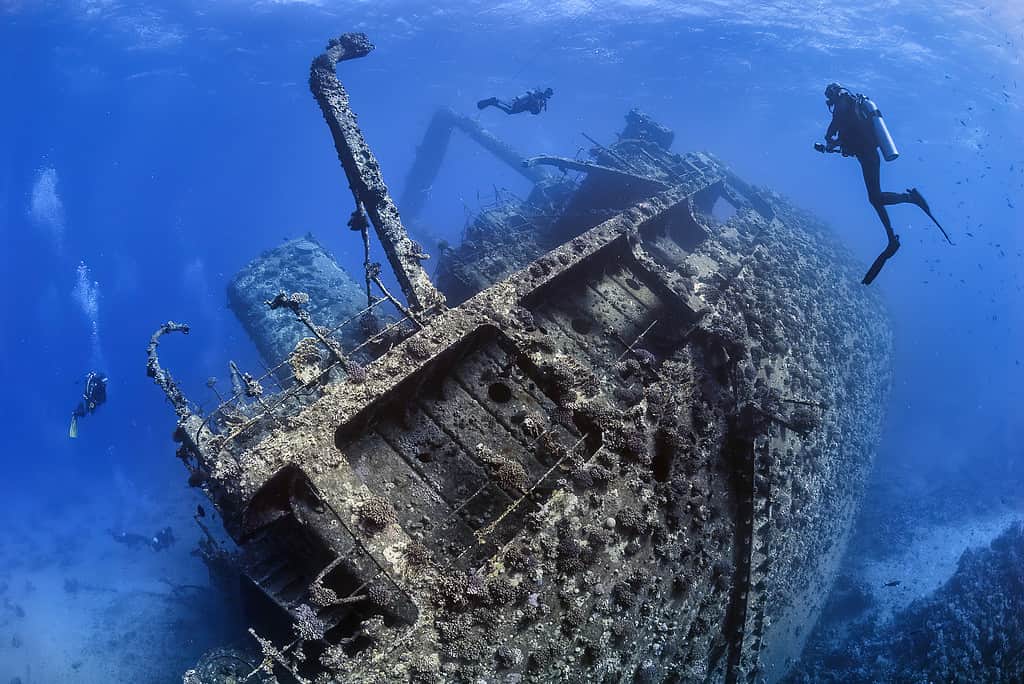
The SS Thistlegorm is at the depths where the Ras Muhammad National Park is located and has become a popular diving location.
©Nicolas Sanchez-Biezma/iStock via Getty Images
Many of the seas throughout the world also have things in their depths, and we’re not talking about animals. The Red Sea is no different. When the Suez Canal opened in 1869, the Red Sea became a common international trading route. Since then, there have been a total of 47 documented shipwrecks in the Red Sea.
One of the most famous shipwrecks is of the SS Thistlegorm, a British cargo ship that was sunk by German bombers during the Second World War. But that’s not all, there are other ships at the bottom of the sea including the Greek ship Chrisoula K, the Japanese carrier Giannis D, the German cargo ship Kimon M, and the British sailing ship Carnatic. Interestingly enough, all four ships are located by the Abu Nukhas reef, which locals called the Red Sea’s Bermuda Triangle.
Salt Production and Desalination
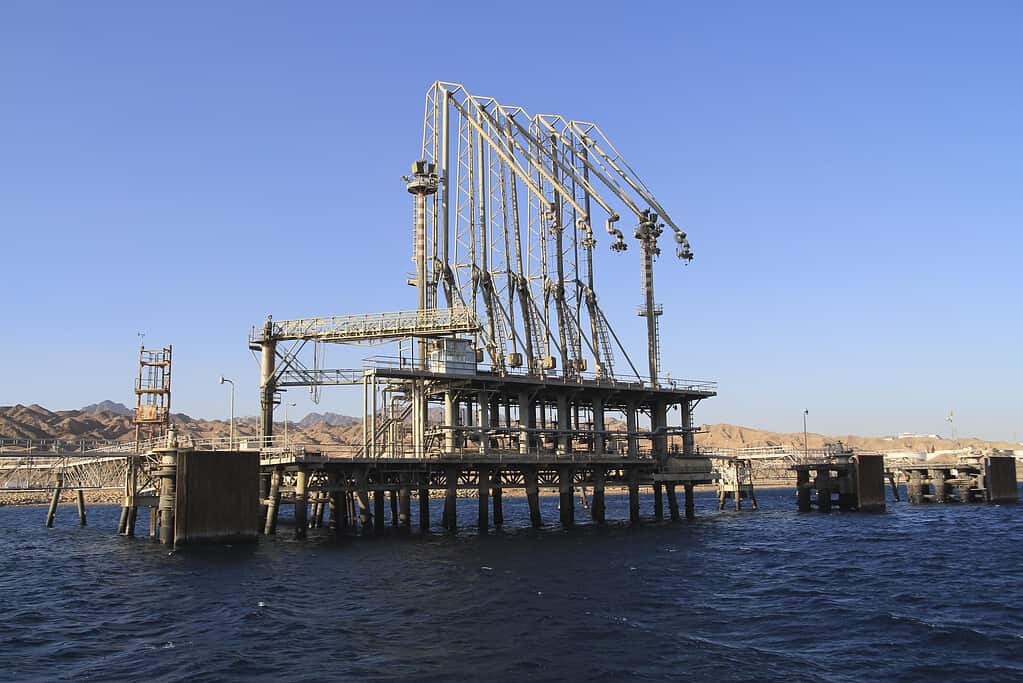
Various industries have made the Red Sea home including the oil and gas industries, the salt industry, and others.
©Vrangeltv/iStock via Getty Images
Because the Red Sea is so salty, two types of industries are heavily impacted. Various salt production companies extract salt to produce an export. Moreover, there are more than a dozen desalination plants throughout the Red Sea, especially along the coast of Saudi Arabia. Unfortunately, these desalination plants discharge several chemicals that are slowly killing the wildlife living in the Red Sea.
The other industries that make the Red Sea home — like the oil companies that have set up oil rings along the Gulf of Suez and the Red Sea — are also affecting the environment in those waters negatively. In fact, there have been various oil spills that have affected the localized wildlife.
Prime Tourist Destination
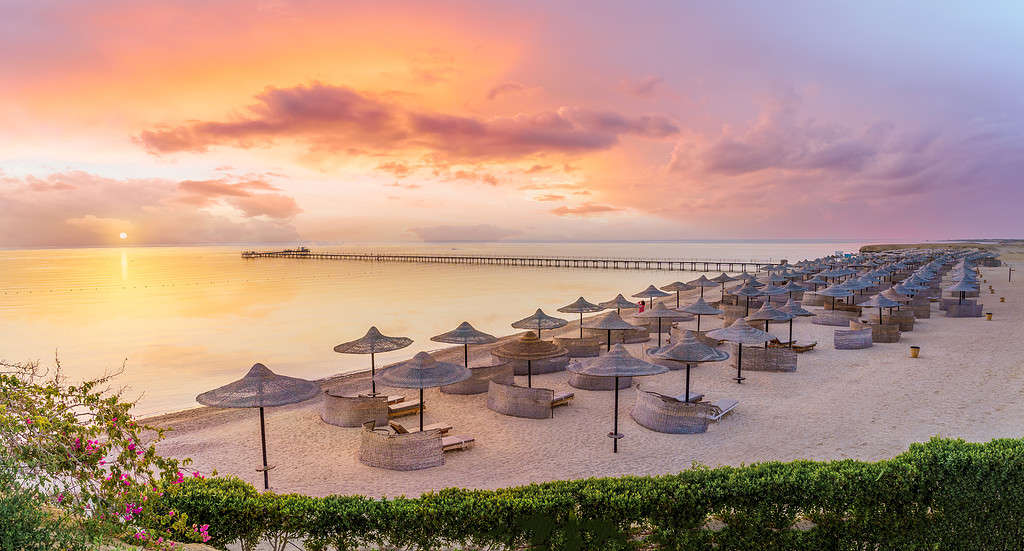
Some of the most popular activities to do in the Red Sea are scuba diving and snorkeling.
©Balate Dorin/iStock via Getty Images
The Red Sea is one of the most popular tourist destinations in the world. It boasts white sandy beaches, turquoise blue waters, and a stunning coastline. Along its coasts are trendy resorts and beach towns dedicated just to tourism. While in the water, don’t forget that you can float quite easily because of the high salinity.
This tourism, however, is not only reserved for beachgoers. The Red Sea is also famous for being a popular diving destination. You can dive from dive boats in Hurghada, or from safari boats in St. John’s or Zabargad. If you don’t want to go far, you can just go to Marsa Alam or Dahab and dive from the shore. While diving you can traverse the Red Sea looking for treasures, explore the shipwrecks in its depths, or view the vivid and colorful coral reefs.
Economic Importance
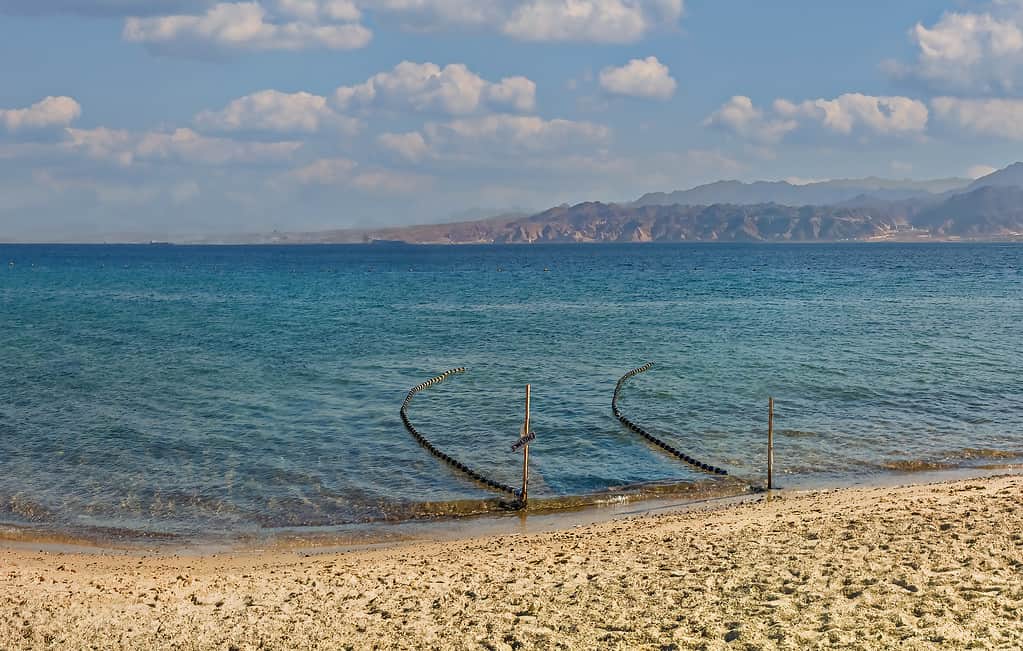
The Red Sea has been an economically important body of water for its surrounding countries for centuries.
©gorsh13/iStock via Getty Images
The Red Sea is located between Africa and Asia. The sea borders eight countries — Egypt, Eritrea, Saudi Arabia, Sudan, Djibouti, Yemen, Jordan, and Israel. The sea is connected to the Mediterranean Sea through the Suez Canal and is connected to the Indian Ocean through the Strait of Bab al-Mandab. What this means is that the Red Sea is an extremely important body of water for the global economy. A total of 7% of all sea trade goes through the Suez Canal.
The Red Sea has been a trading sea route for centuries because it connected people from Europe to Eastern Asia, and vice versa. The sea is also important to both the tourism and fishing industries of the respective countries that border the body of water.
Conclusion
And there you have it, these are 10 mind-blowing facts about the Red Sea. The sea is unique because it is one of the most saline seas in the world, unlike its counterpart, the Baltic Sea. The sea is also steeped in a rich history that stretches from the days of Moses to the modern times of economic trading. The countries that surround the Red Sea consider it an important sea commercially, militarily, and environmentally.
If you get the chance to visit the region, or the countries surrounding the Red Sea, look out into the beautiful blue waters to discover the colorful wildlife living in its depths. And while you snorkel or scuba dive to explore the animals in the Red Sea, think about its beauty, its diversity, and its amazing history.
The photo featured at the top of this post is © IgorSPb/iStock via Getty Images
Thank you for reading! Have some feedback for us? Contact the AZ Animals editorial team.






